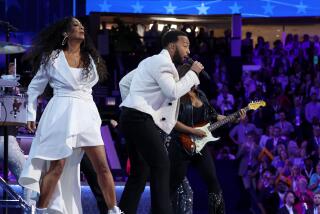Convention speeches are an art. How Biden and Trump can get it right, virtually
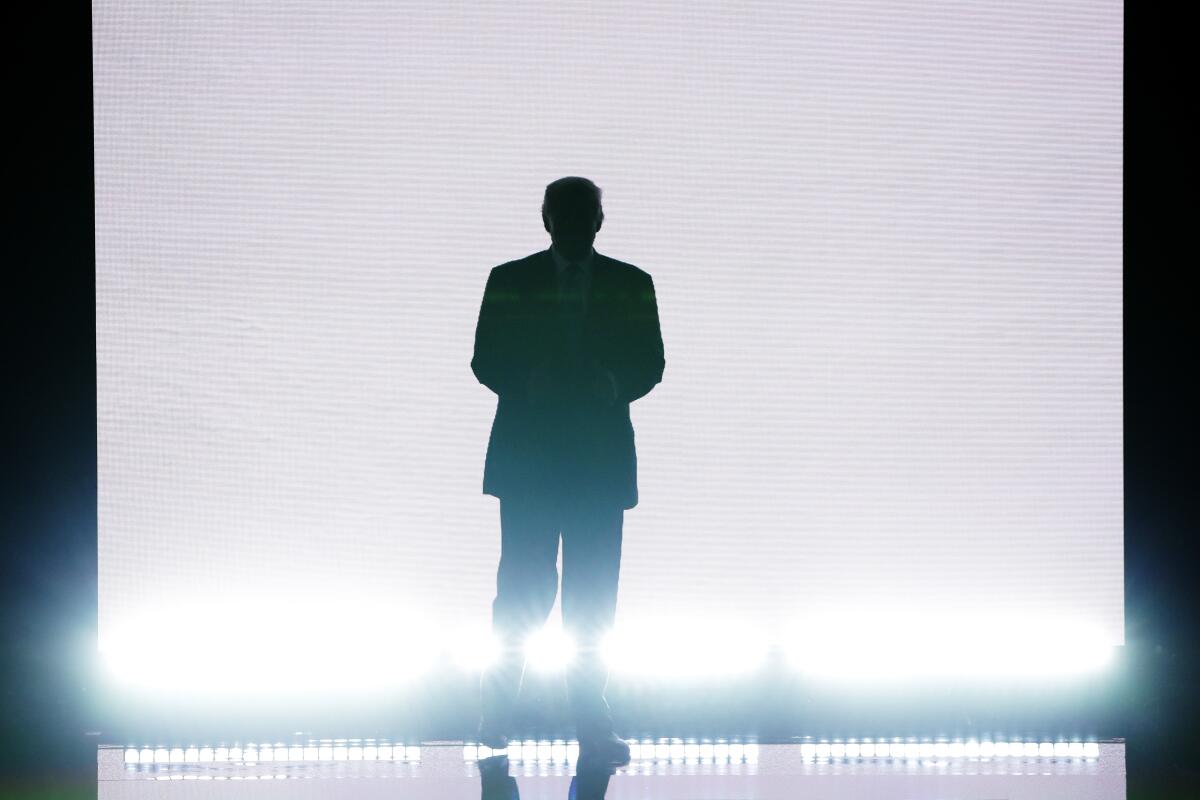
- Share via
The impresarios of the Democratic and Republican national conventions are facing the same theatrical problem that playwrights, stand-up comics and concert singers have been grappling with since the pandemic darkened our stages: how to simulate the look, sound and feel of live performance.
Creative minds have been searching desperately for solutions on interactive platforms like Zoom. But none has been able to figure out how to make virtual attendance seem like the real in-person deal.
Theater practitioners and theorists have long been consumed with a related question: What distinguishes the stage from the screen? Susan Sontag argued that the difference lies in the handling of space. Peter Brook contended that the theater, unlike film, “always asserts itself in the present.”
Theater directors Antonin Artaud, Jerzy Grotowski and Augusto Boal believed the answer to the mystery could be found in ritual. Director Joseph Chaikin pointed to “the presence of the actor,” which he defined as that “quality that makes you feel as though you’re standing right next to the actor, no matter where you’re sitting in the theatre.”
Underlying these conceptual frameworks is the recognition that the fundamental unit of the theater isn’t the performer alone but the performer in physical proximity to an audience. Something alchemical occurs when we enter a shared space. A principle of quantum physics holds that “mere observation of a phenomenon inevitably changes that phenomenon.” Live performance provides artistic proof.
Digital technology has solved the problem of synchronicity. On Zoom we can be together at more or less the same time from different locales. But the platform is more effective in collecting solitudes than in bringing strangers on a large scale meaningfully together. The participatory circuitry just isn’t as strong.
Technology has palliated the ache of isolation wrought by the pandemic, but no matter how star-studded the theatrical event, no matter how sophisticated the visual presentation or powerful the internet signal strength, there’s no escaping the remoteness of the experience. As a Los Angeles-based theater critic, I complain all the time about traffic. Parking brings me to the brink of nervous collapse, and don’t get me started about texting in the theater. But the magic that happens when human beings herd their animal presences into a collective body has no substitute.
Bill Maher, who has returned from his summer hiatus with new episodes of “Real Time With Bill Maher,” has attempted to get around the absence of a studio audience during his opening monologue by showing vintage footage of folks laughing uproariously. Old Hollywood (including a dolphin I assumed was Flipper) has been busting a gut on HBO on Friday nights alongside guffawing nobodies. But Maher’s loneliness is almost unbearable to watch. Laughter is oxygen to a comedian, and by the time Maher reaches his final joke he seems almost drained of color.
How will theatrically vulnerable Joe Biden fare when the Democratic National Convention, which had been scheduled to take place in Milwaukee, kicks off Monday at a computer screen near you? Donald Trump, who has felt no compunction about holding rallies in COVID-19 hotspots, is not going to let a deadly pandemic ruin his close-up when the Republican National Convention gets underway Aug. 24. The pesky virus scuttled his party plans in North Carolina and Florida. But in defiance of ethical constraints and democratic norms, to say nothing of epidemiological caution, he has proposed the Gettysburg battlefield as a possible locale and has even been threatening to use the White House as a stage set for his speech, setting up the prospect of a raucous cluster of supporters jubilantly turning in health waivers as he tosses red meat from a podium on the South Lawn.
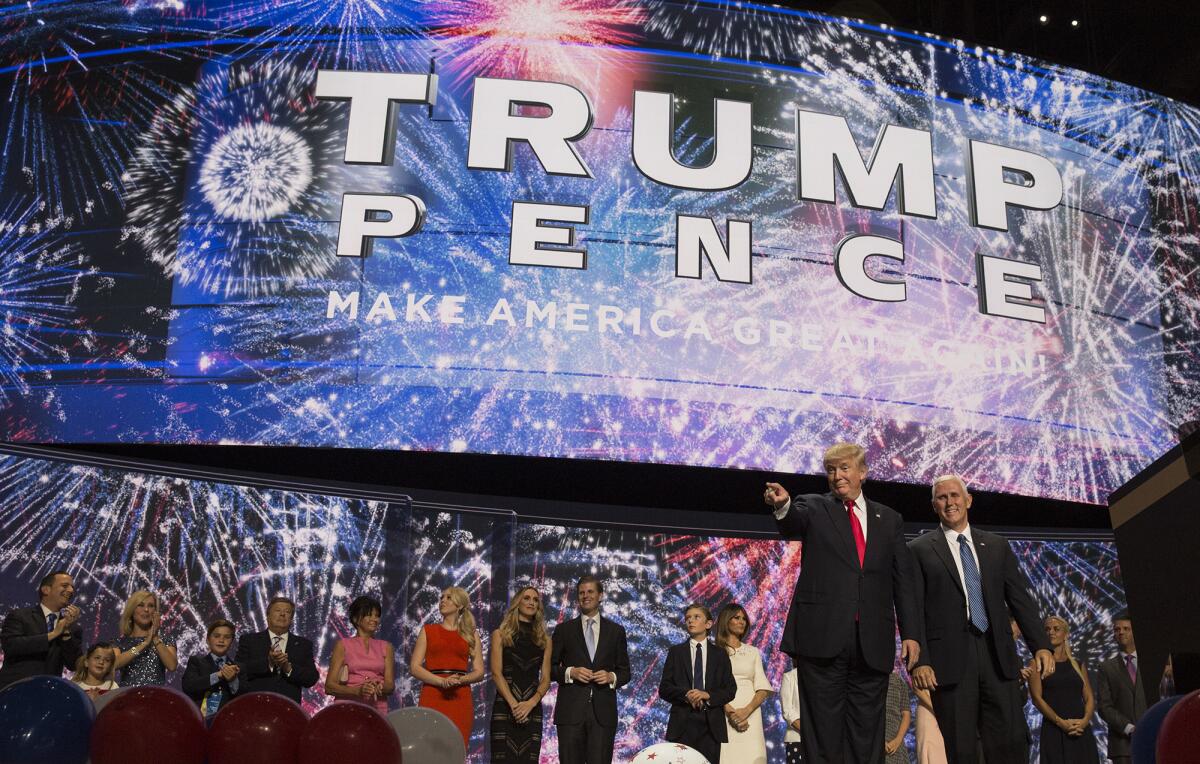
Biden’s campaign could use the injection of enthusiasm that these political conventions are designed to supply. The anti-Trump passion is cresting, but the pro-Biden energy could use a boost.
The goal of conventions isn’t so much to sell a candidate as to unify a platform and galvanize a base. Most who are tuning in have already made up their minds. Viewers at home who aren’t hate-watching or channel-surfing are vicariously attending a party meant to propel a nominee across the finish line.
Television understands the power of the in-person audience. Cameras pan the crowd for reactions to speeches while lavishing attention on nutty costumes, quirky placards and other signs of zealotry. As the formal nominating process involves the participation of delegates, the action isn’t only onstage but also in the arena. Democracy erases the line between spectacle and spectator.
Brokered conventions seem to be a thing of the past, so there isn’t any drama about who will be officially nominated. But there is an emotional build as the candidate at the center of the hoopla comes forward on the fourth and final day to accept the nomination in a speech laying out what’s at stake in the election.
Political stars are sometimes made en route to this big moment. Recall Barack Obama’s keynote address at the Democratic National Convention in Boston in 2004, a speech that catapulted the fortunes of a little-known Senate candidate who already seemed to have destiny smiling on him.
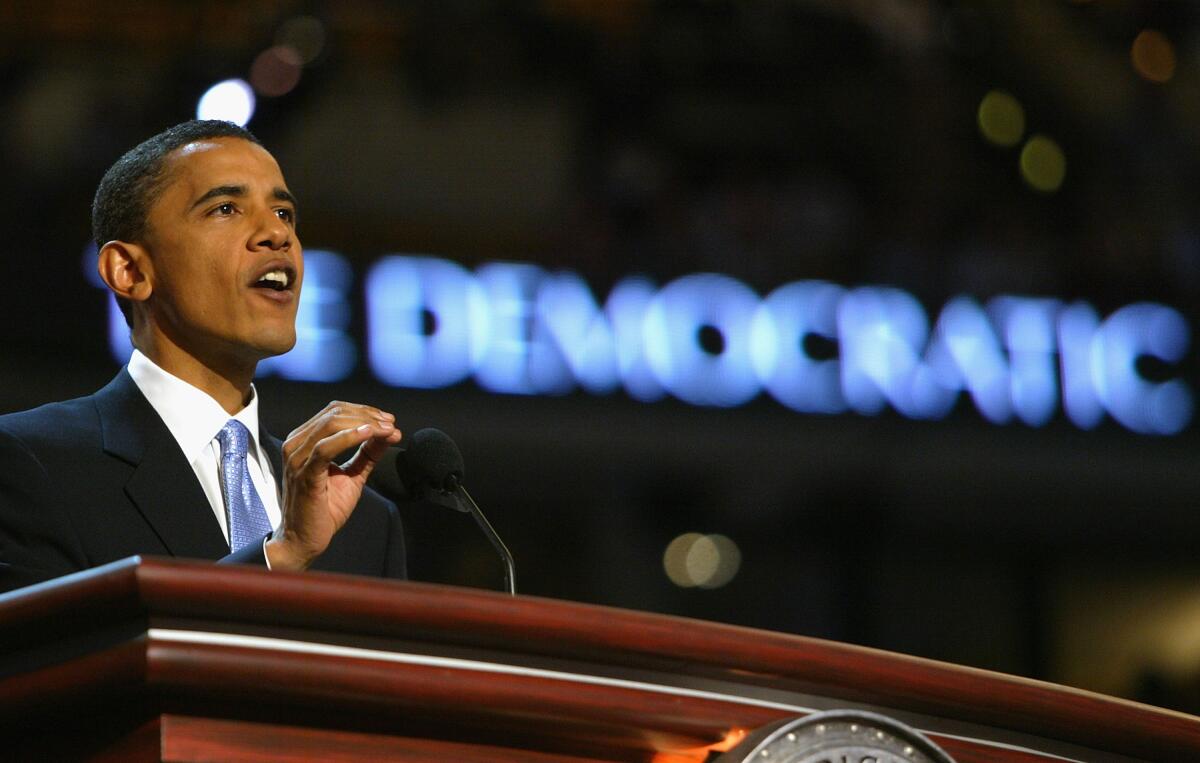
Weirdness also often plays a role: How else to explain Clint Eastwood’s performance at the 2012 Republican National Convention, in which he directed his rambling remarks to an empty chair? Had Benito Mussolini been around for Rudy Giuliani’s unhinged rant at the Republicans’ truculent 2016 shindig, he likely would have advised New York’s former mayor to take his arm-flailing act to a Roman balcony.
There’s a hunger for political eloquence in these aggressively inarticulate times, but oratory as stirring as then-New York Gov. Mario Cuomo’s 1984 Democratic convention speech is the exception rather than the rule. Alliteration wasn’t Sen. Bill Bradley’s friend at the 1992 Democratic convention, in which he kept repeating the phrase “waffled and wiggled and wavered” to diminishing effect in a speech that had some in the audience thinking about breakfast at IHOP rather than the leadership failures of President George H.W. Bush.
Regardless of the quality of the speechmaking, it is the act of listening collectively — of hearing ourselves listen as a nation — that makes conventions must-see TV. The roar of the crowd when a politician hits a rhetorical home run is an electrifying experience for those of us watching from home.
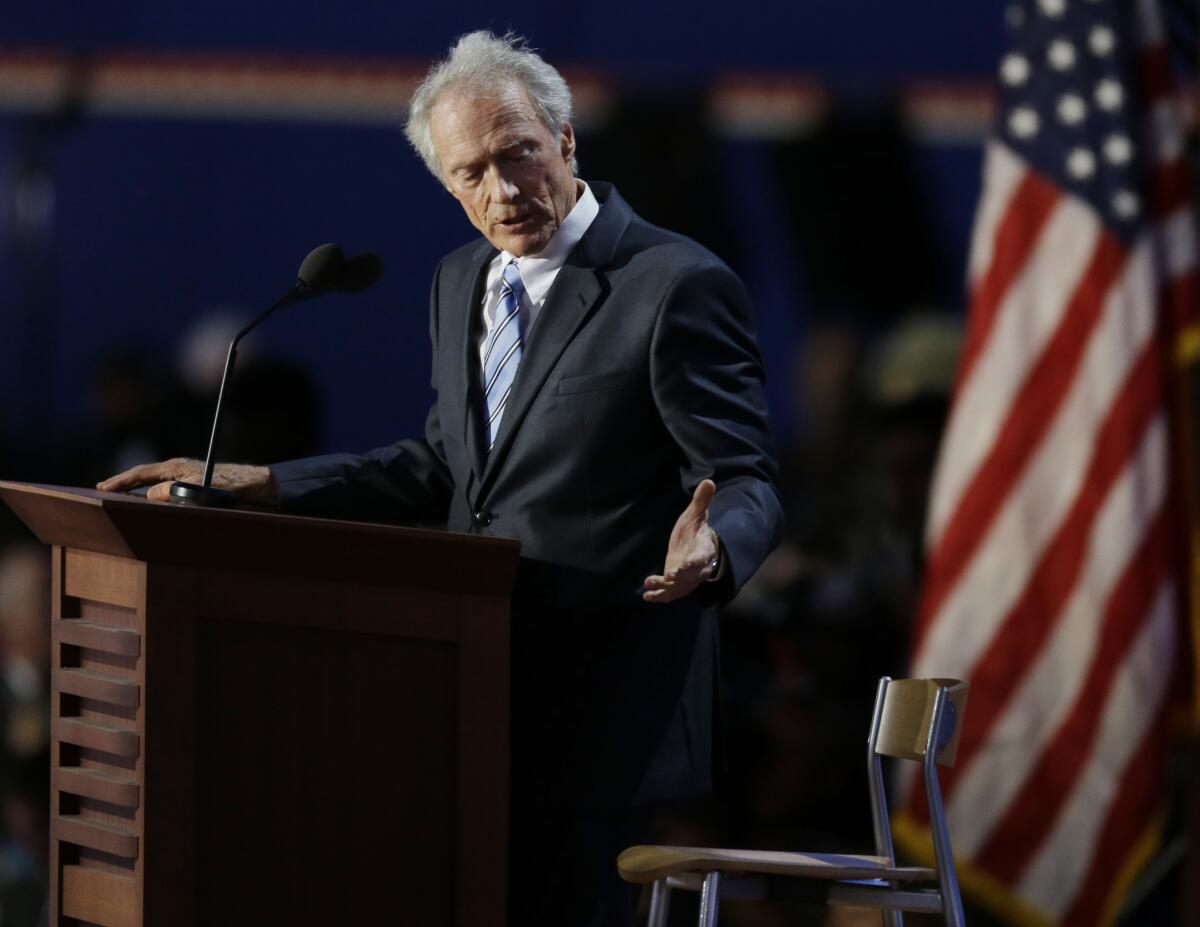
But how can this effect be duplicated at a time of social distancing? Revving up the verbal pyrotechnics isn’t going to cut it. Not even a resurrected Shakespeare could supply Biden with the right words to overcome the leaden ambiance of his basement studio.
Those saccharine video biographies of candidates, long a staple of conventions, will fill some airtime. Pundits who abhor a vacuum even more than nature will gas on with conventional wisdom. So much for what will unite the two programs.
One party (the Democratic) will be forced to confront the disturbing reality that our most sacred democratic value — the right to vote— is under a multiflank assault, while the other party (the Republican) will stop at nothing, including spreading lies about mail-in balloting, to suppress the turnout. Theatrically, politically and quite possibly metaphysically, these conventions will offer a window onto an America so divided that not even widespread sickness, death and economic ruin have been able to bring the nation together.
Trump, who has the shrewdest performance instincts of any politician in our polarized media world, understands that conflict sells. His crudeness is his not-so-secret weapon. With a cast of characters as ludicrously combative as professional wrestlers, he turned the 2016 Republican National Convention into “The Donald Trump Show,” a marathon of war whoops, insult comedy, racist dog-whistling and dystopian storytelling.
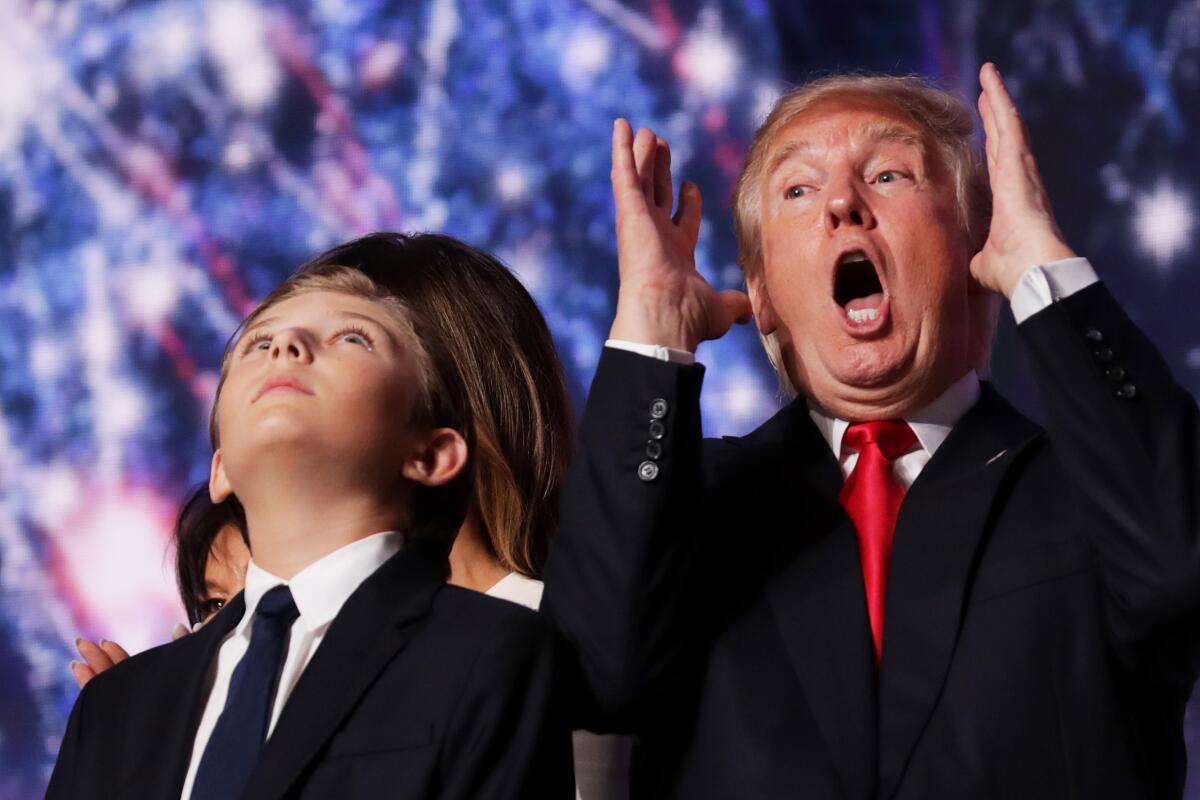
The question of what Trump might do to top himself now that he has control of the levers of government is chilling to contemplate. Down in the polls and no doubt fearful of the investigations that will ensue if he loses the carapace of the presidency, he will be forced to pull out all the stops. It’s going to be ugly, and the media will reward his every boorish move.
Meanwhile, Biden will be second-guessed for playing it safe, second-guessed for taking risks and second-guessed for not being as crazy as his opponent. He was smart to pick a running mate with the charisma of Sen. Kamala Harris, for he’ll need her political star power to deflect from the gaffes and verbal stumbles that have always been part of his act. Questions about age and cognitive decline are inevitable, even as the reality of Trump’s shakier mental and physical fitness will once again be drowned out in carnival tumult.
For Biden’s sake, let’s hope the organizers of the Democratic convention have been thinking up new conversational formats, perhaps something along the lines of the candidate’s recent dialogue with Obama. Let’s also hope that the funeral for Rep. John Lewis, a fitting emotional sendoff for an American hero, will inspire possibilities of limited convening. Safety has to be the priority, but the candidate who figures out a responsible way of bringing together small groups will have a decisive theatrical advantage.
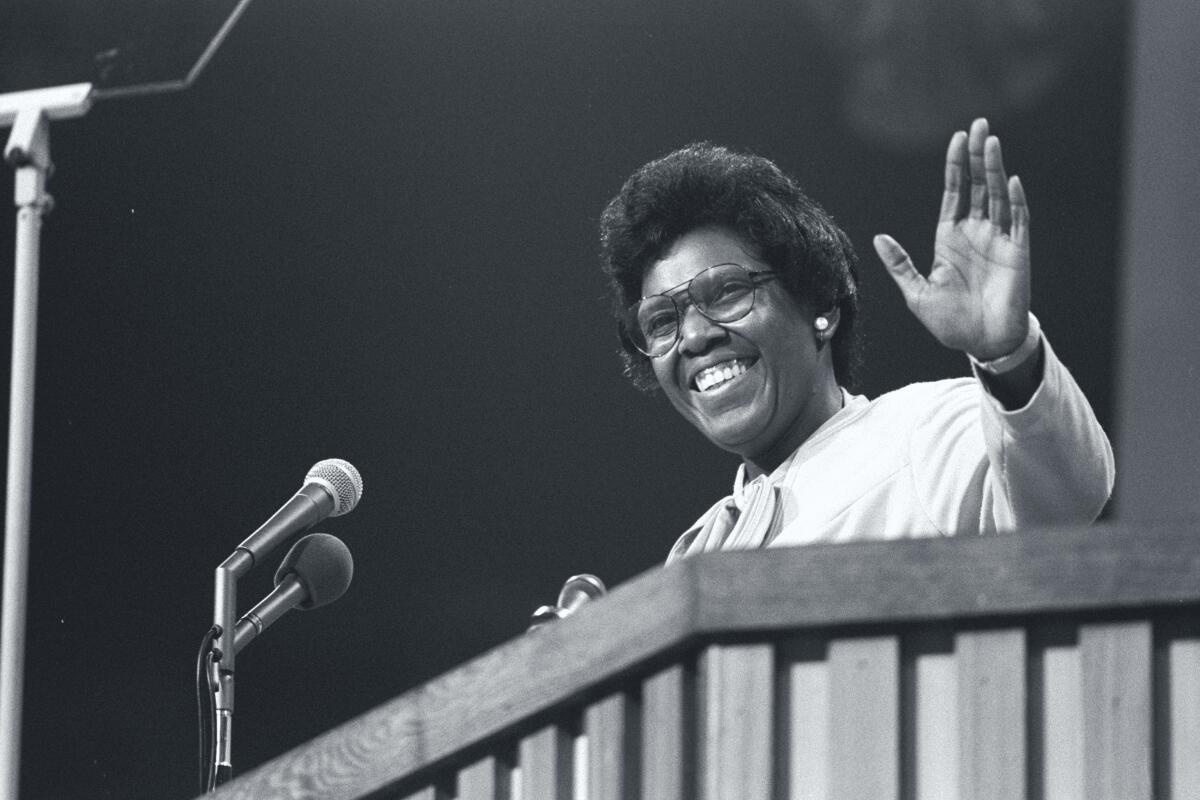
As for rhetorical strategies, the unvarnished truth, spoken with conviction and gravitas, can still crack through our screens and touch our hearts and consciences. Let me leave you with words from one of the most moving speeches in convention history, Rep. Barbara Jordan’s keynote address at the 1976 Democratic National Convention, the first delivered by a Black woman:
We are a people in a quandary about the present. We are a people in search of our future. We are a people in search of a national community. We are a people trying not only to solve the problems of the present, unemployment, inflation, but we are attempting on a larger scale to fulfill the promise of America. We are attempting to fulfill our national purpose, to create and sustain a society in which all of us are equal.
More to Read
Get the L.A. Times Politics newsletter
Deeply reported insights into legislation, politics and policy from Sacramento, Washington and beyond. In your inbox three times per week.
You may occasionally receive promotional content from the Los Angeles Times.
